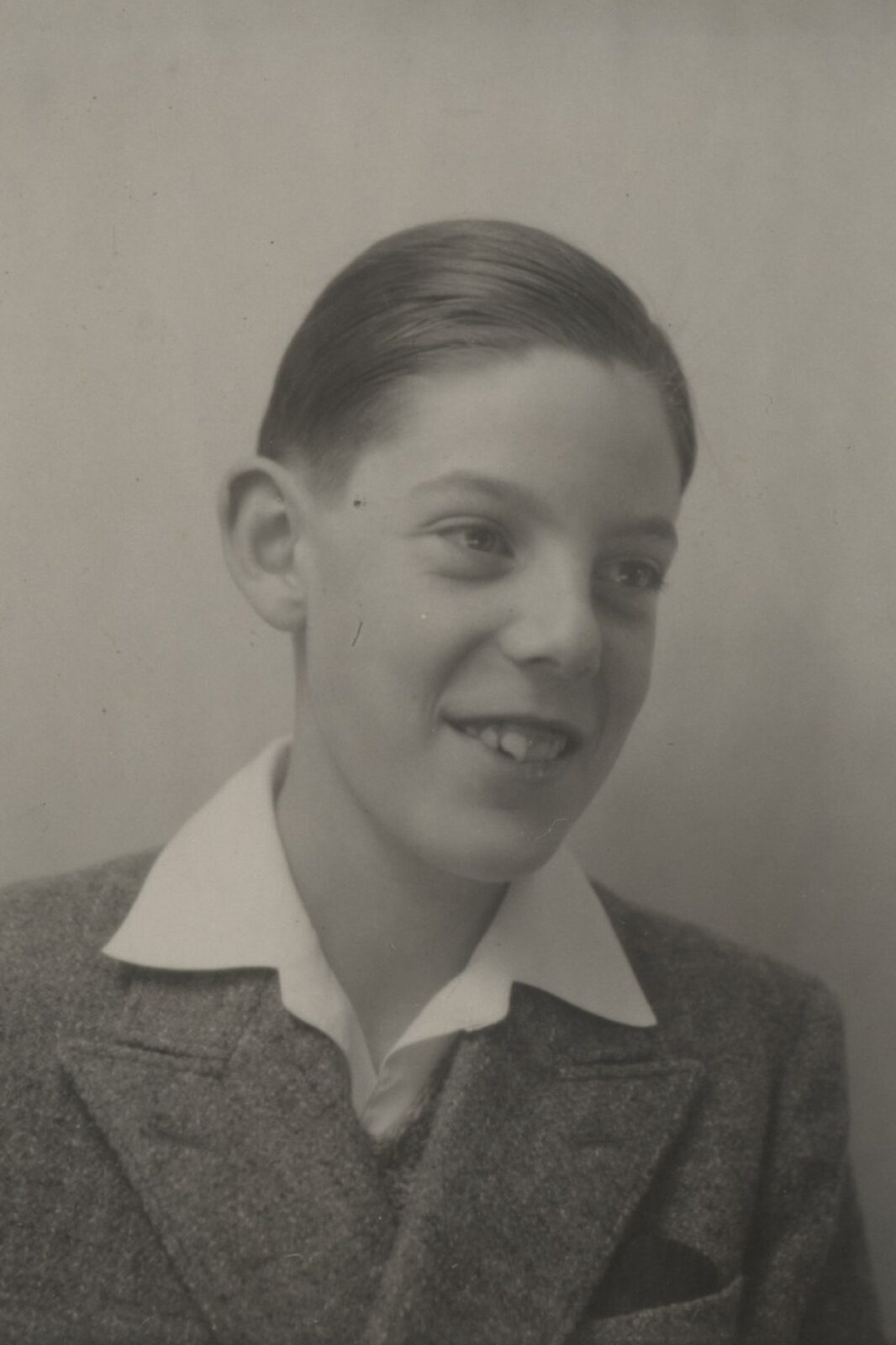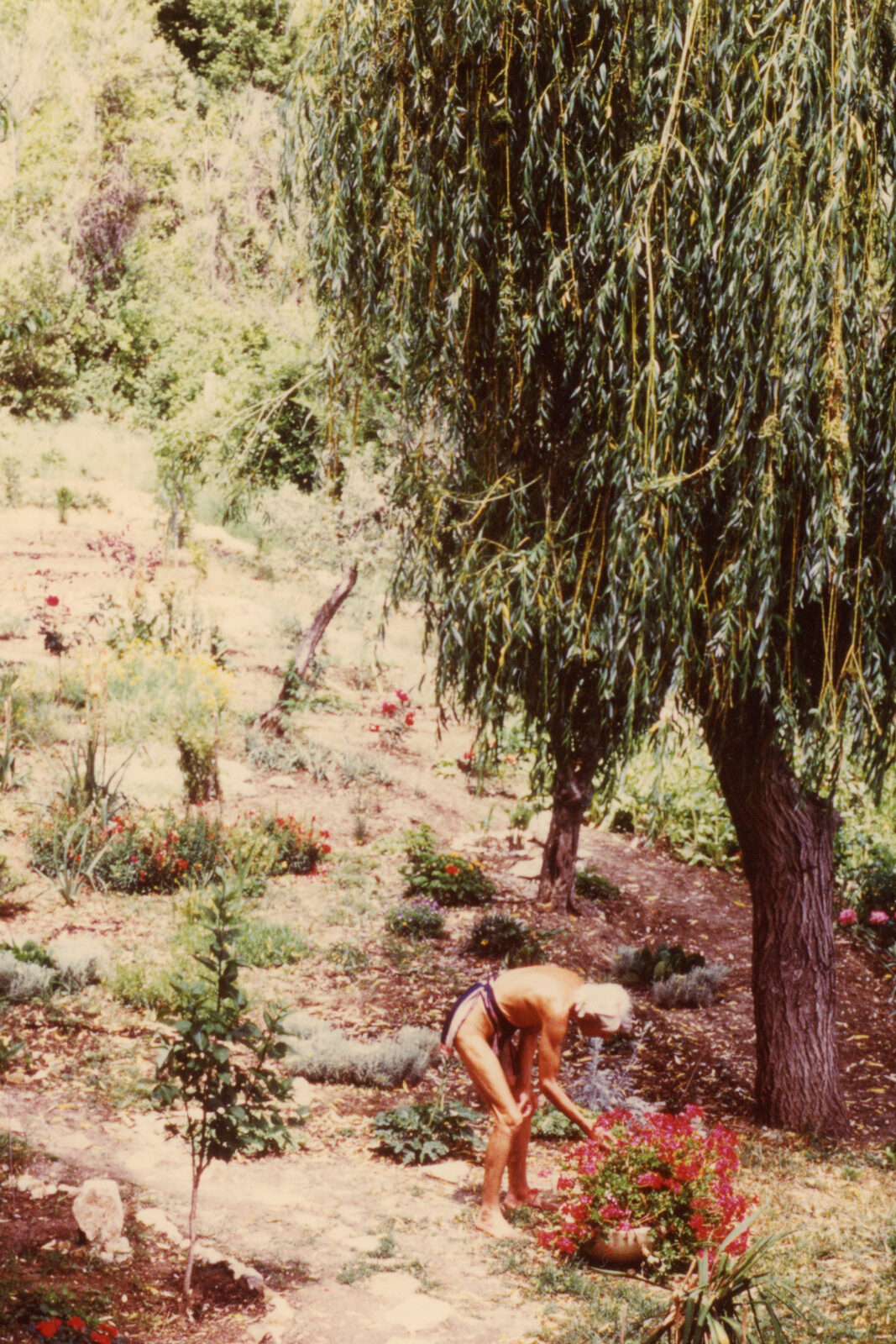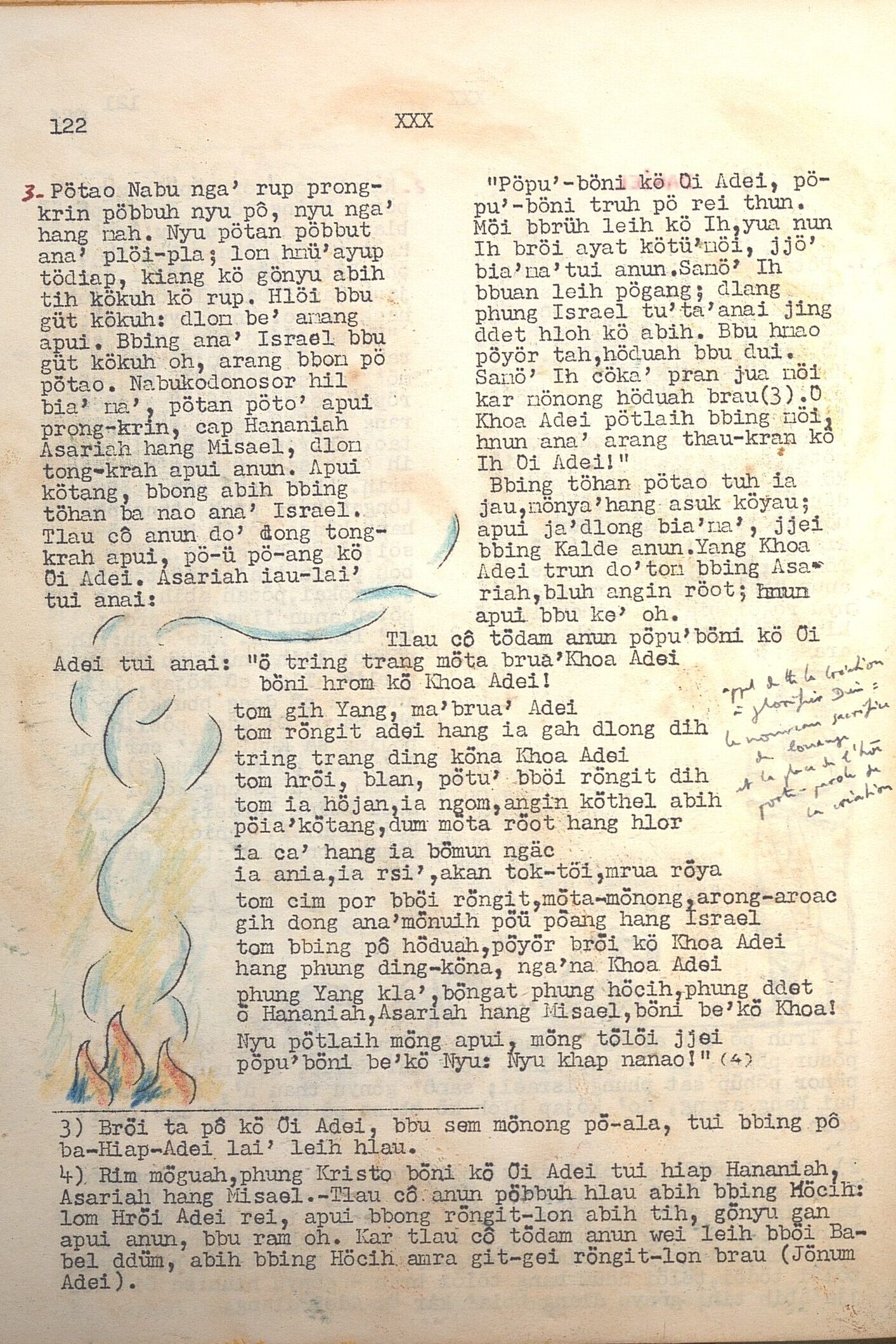“I was born in Saigon in 1946, I was 24 years old.”
- 1922: Born into a bourgeois family, studious childhood
- 1940: Baccalaureate in philosophy and mathematics, entered the Grand Seminary of Versailles
- 1945: Ordained as a priest for the Paris Foreign Missions Society (MEP). Desire for distant lands and encounters with otherness
- 1946-1954: eight years of missionary work among the Sré ethnic group
- 1949: publication of a Sré dictionary. Participation in the commission for the official transcription of the Sré language
- 1954: end of French Indochina. The Central Highlands come under the administrative control of the new Republic of South Vietnam
- From 1955: settlement of refugees from North Vietnam in the Central Highlands and massive arrival of Vietnamese agricultural settlers
- 1954-1955: vocational doubts, spiritual retreat in Algeria following in the footsteps of Charles de Foucauld
- 1955-1968: 13 years of missionary work among the Jörai ethnic group
- 1957: Georges Condominas published Nous avons mangé la forêt (We Ate the Forest), based on his field study among the “Highlanders” of Sar Luk
- From 1959 onwards: growing insecurity in the Central Highlands, displacement of mountain village populations
- 1962: stay in Rome for the opening of the Second Vatican Council
- 1963: Publication of Dieu aime les païens (God Loves Pagans), his first work on theology
- 1964: Stay in Rome for the second session of Vatican II, as a peritus (expert) in missiology
- 1964: publication of a Jörai dictionary
- 1968 (January): on leave, returns to Paris to defend his thesis Bois-Bambou, aspect végétal de l’univers Jörai (Wood-Bamboo, the vegetal aspect of the Jörai universe) at the EPHE. Elected member of CEDRASEMI
- 1969: “triangular journey” to Sumatra and Borneo, with a view to comparing Austronesian cultures
- 1970: permanent return to France, distancing himself from the MEP Society without a definitive break
- 1972: Defends his postgraduate thesis entitled Coordonnées : structures jörai familiales et sociales (Coordinates: Jörai Family and Social Structures)
- 1972-1987: Research position at the CNRS in Paris.
- 1973: Defends his doctoral thesis on Pötao, a theory of power among the Jörai people of Indochina, before Claude Lévi-Strauss
- 1975: Participated in the creation of the research group “Orality and Oral Domains” at INALCO
- 1993 (March): Died at his home in the Gard region, buried in the MEP cemetery
Sré and Joraï: two ethnic groups of “Highlanders” in the Central Highlands of Vietnam
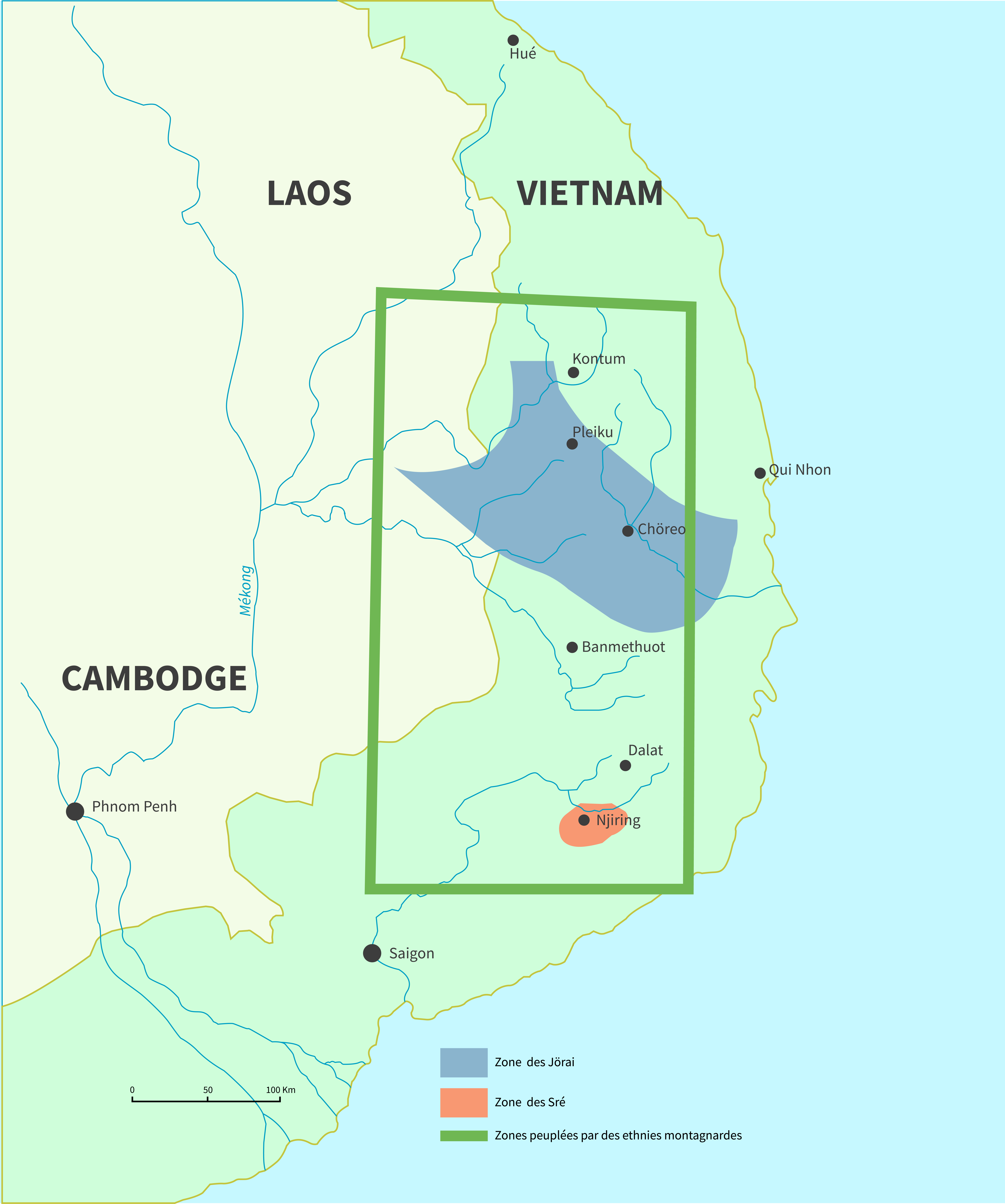
On the borders of Vietnam, Laos, and Cambodia, a long strip of land stretching 600 km from north to south is home to more than 50 ethnic minorities, each with their own languages and traditions. These are plateaus with an average altitude of 600m, currently home to around 1.3 million members of these ethnic groups in Vietnam alone. Known until the mid-20th century by the pejorative term “Moïs” (‘Savages’), they are now more commonly referred to as “Highlanders.”
Languages and customs differ from one ethnic group to another, but the landscape and social organization are common to all. All live in the forest, which covers the peaks (up to 2,000 meters) and the plains watered by the tributaries of the Mekong River. To clear the areas needed for paddy rice cultivation, the Highlanders practice slash-and-burn agriculture (clearing by burning and forest fallow): they “eat the forest,” as Georges Condominas poetically put it. Due to this limitation of space by a predominantly vegetal world, the village is the most suitable social entity, above which there is no hierarchical structure.
Interacting extensively with each other, the Highlanders have always had more limited contact with the Vietnamese populations, who for a long time viewed them with curiosity. Long before the French colonists, priests from the Paris Foreign Missions Society (MEP) were the first Westerners to encounter them, beginning in 1849. With the exception of the Bahnar mission developed in the Kontum region, the “Highlands missions” remained modest until World War II.
It was in this context that the young missionary Jacques Dournes arrived in 1946, sent by the bishop of Saigon to share the life of the Sré ethnic group, south of Dalat. Ten years later, Father Dournes changed missions and moved further north to live among the large Jörai ethnic group (approx. 320,000 members), which remained the main focus of his affection and studies until his death.
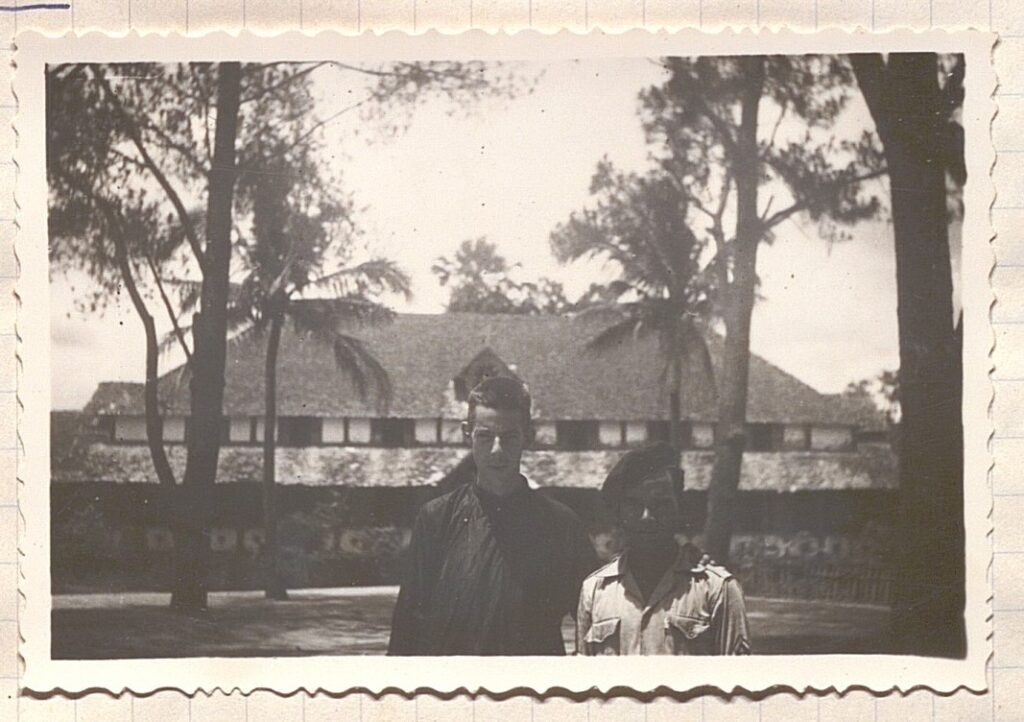
Mountaineer among Mountaineers: 25 Years of Total Ethnology
Like any MEP priest arriving in a mission country he did not choose, Fr. Dournes had not previously received any dedicated training. However, it was on two occasions (in 1946 in Kala with the Sré and in 1955 in Cheo Reo with the Jörai) that he had to immerse himself, alone, in a world that had until then been relatively unaffected by colonial and ecclesiastical influences. This young 24-year-old urbanite arrived at his first post with a suitcase of books and a typewriter as his only imported items. The first weeks were dedicated to building his hut-chapel from local bamboo. The food was that shared with him by the few families who opened their homes to this stranger they had not called.
Upon leaving Vietnam, after a quarter of a century dedicated solely to this field, he had published 10 works on theology and linguistics, more than 200 articles on ethnography and botany, and had amassed the material necessary for writing two theses and numerous publications that followed. Such a production reveals a tireless work that led to an “intimacy with the contemplated culture.”
He had the benefit of time: the missionary leaves for life. Without having been premeditated, my method of research was linked to my living conditions in Jörai country – as in Srê country previously. I had time to let myself slowly soak it up, proceeding with a diffuse quest rather than conducting systematic investigations. Above all, he sought mastery of the local language to the point of stripping away the native language as a prerequisite for any knowledge: I engaged in a study from the inside, taking my notes in the Jörai language, so as not to risk interpreting too soon.
A colossal documentary production
Dournes, as a good ethnologist, filled observation notebooks, drew up topographical and technical diagrams, photographed, reproduced landscapes and faces in watercolor, recorded and transcribed. He managed to document all aspects of the natural environment and material culture. He could count on a rare work force, amplified by a solitary and ascetic lifestyle. Often described by his Western interlocutors as rigid and cold, he does not seem to have been restricted by this trait in his relations with the Montagnards. He also benefited from a facility for writing, demonstrating rigor and precision.
His geographical scope was not limited to the two ethnic communities for which he had pastoral responsibility. Each year spent on the High Plateaux required him to undertake “tours” that were both missionary and exploratory, in groups of villages or neighboring ethnic groups, annotating his notebooks in the evenings of days of walking on steep tracks. From these comparisons of languages and customs, he drew his studies in social and political anthropology.
As for the purpose of his publications, Dournes denies having studied the Jörai “for pure pleasure”, but also to make them known, which was a way of pleading the cause of the original and underestimated minorities.
Living, evolving cultures
What do the Jorai think? That is the question
From the earliest years, and this is his genius, he had the intuition that material culture is a springboard towards the immaterial, towards the profound knowledge of man, an approach that he calls “in-depth cultural anthropology”: “How man, barefoot in the rice field, thinks, reacts – that is what is interesting.” This desire to reveal the imaginary, to interpret thinking with the help of speech motivated what was his main object of study until the end: the oral literary heritage of the Montagnards. Without knowing it, Dournes was already practicing the ethnoscience conceptualized by Lévi-Strauss in La Pensée sauvage (1962).
